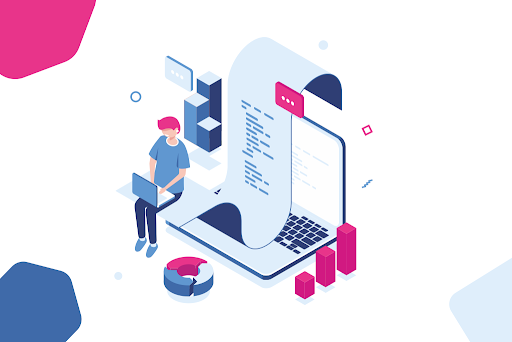
Top 5 reasons why Data Centers need SOC1 Audit Report
Organizations often outsource some of their services to third-party vendors for handling their business-critical data. With some of your most valuable data assets stored with third-party organizations, security becomes a major concern. As a service organization, you would want to know whether the security controls implemented are the best practices to safeguard your customer’s data. You would also want to ensure that your third-party vendor is Compliant with various industry standards. This is when a SOC1 Audit comes into the picture. SOC1 Audit plays a key role in ensuring whether or not a company is compliant with the set security standards and has in place necessary controls. This blog covers the top 5 reasons why a data center should consider or rather need a SOC1 Audit. But before delving in, let us first understand what a SOC1 Audit is.
What is a SOC1 Audit Report?
SOC 1, also known as the Statement on Standards for Attestation Engagements (SSAE) 18, is an audit report referred to as a report on Controls at a Service Organization. It is a report on controls relevant to user entities' internal controls over financial reporting. It is a mandated audit of a third-party vendor's accounting and financial controls. SOC 1 reports come in two variations, namely: SOC 1 Type I and SOC 1 Type II. While the Type I pertains to the audit taken place on a particular point of time, on a specific single date. Type II report is more rigorous and based on the testing of controls over a duration of time (Min 6 months).
Data centers who host critical systems of their clients are responsible for certain controls over those systems, including the physical and environmental security and even more depending on the level of engagement or services being provided to the clients, which may even include Managed Services. Given below are listed the top 5 reasons a Data Centers needs SOC1 Report.
- Assurance of Controls
Compliance with the SOC1 standard demonstrates that a Data Center has the appropriate controls in place to protect and account for financial data. The reports verify that a facility’s security operations are in line with industry best practices. It further verifies that the vendor can maintain high levels of data availability while taking all necessary precautions against a potential data breach.
- Builds Trust
The Compliance standards ensure both your organization and the third-party vendor (Datacenter) are accountable to the same high standards of security. Given the high value of data, your company cannot possibly afford to take chances with subpar Data Centers. However, SOC1 Report provides assurances that the Data Center has implemented the best possible controls to protect your customer’s data. This builds a sense of trust between customers, your organization, and the third-party Data Center. Offering SOC 1 SSAE 18 Type II audit information to your clients will demonstrate that your organization is committed to their needs and providing them a peace of mind that the vendors, too, are secured.
- Sets a high benchmark
SOC 1 audit report provides Data Centers with critical information about the business, systems, and processes they use. This information helps them identify weak areas in their system that need improvement. The audit report can help identify areas where the vendor and your organization falls behind in compliance. This information will further help your business avoid fines and prevent incidents of a breach that may take a toll on your business productivity and business reputation. It sets a benchmark for the vendor to achieve minimum standards of security.
- Limits Multiple Audits
SOC 1 final report is issued in a format that can be used by multiple departments for various security and compliance purposes. With this report, organizations need not go through individual audits for separate branches of your business or organization. Audits are expensive and time-consuming. It can heavily take on a business’s resources and productivity. But, with SOC1 Report having industry-wide acceptance, it saves time and effort for performing multiple audits. The report easily satisfies multiple audits and helps in various other compliance efforts as well. This will definitely help organizations save time, resources and avoid the frustration of multiple audits.
- Facilitates decision making and setting goals
Since the audit is performed independently by an external auditor, you can be confident that the information they receive is objective and free of internal influences. You can be confident that the results are not biased and that it cannot hamper results and influence your decision-making processes. This can help you make the right decisions for your business, improve security controls, and set future goals. SOC 1 audit report provides reliable data that can help you secure financing necessary for expansion and growth.
Final Thought
The key to making the most of the audit report is by ensuring the audit process is robust and complete. This gives you and your vendor (Data Center) assurance that they have implemented relevant and all necessary security controls. This will further boost business productivity and seamless business operations for both your organization and the Data Center.
Author Bio
Narendra Sahoo (PCI QSA, PCI QPA, CISSP, CISA, and CRISC) is the Founder and
Director of VISTA InfoSec, a global Information Security Consulting firm based in the US,
Singapore & India. Mr. Sahoo holds more than 25 years of experience in the IT Industry,
with expertise in Information Risk Consulting, Assessment, & Compliance services. VISTA
InfoSec specializes in Information Security audit, consulting and certification services, which
include GDPR, HIPAA, CCPA, NESA, MAS-TRM, PCI DSS Compliance & Audit, PCI PIN, SOC2,
PDPA, PDPB, to name a few. The company has for years (since 2004) worked with organizations
across the globe to address the Regulatory and Information Security challenges in their industry.
VISTA InfoSec has been instrumental in helping top multinational companies achieve compliance and secure their IT infrastructure.